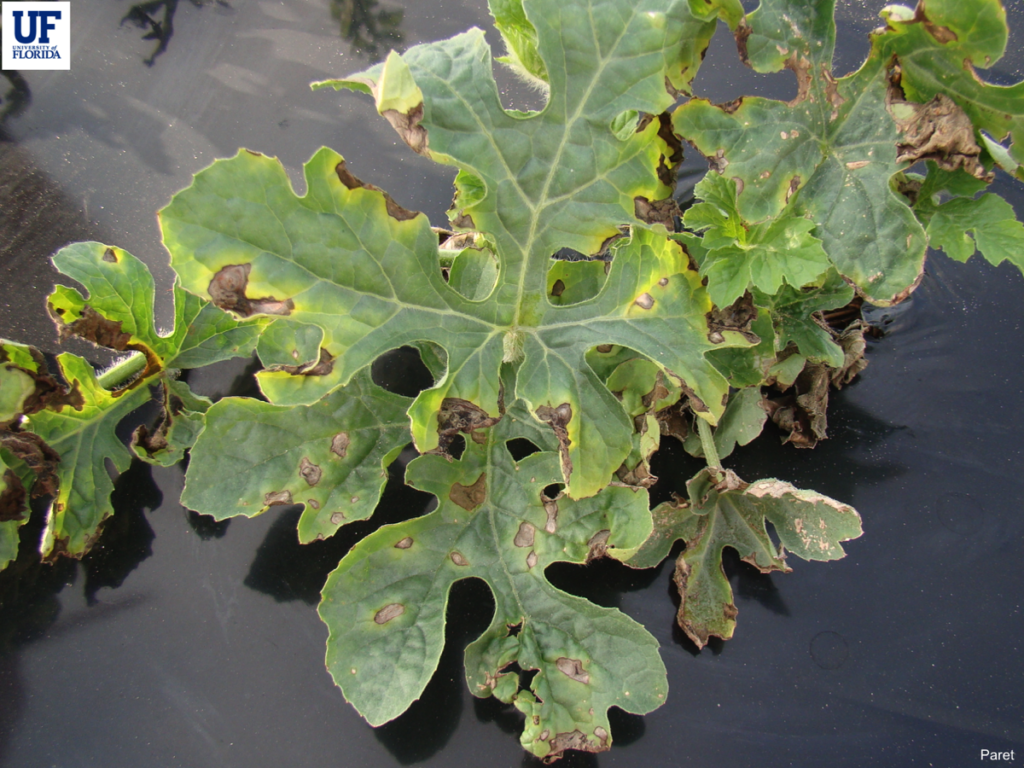By Clint Thompson

Cucurbit farmers in North Florida, South Georgia and South Alabama need to be wary of certain diseases that are already present in some fields.
Mathews Paret, associate professor of plant pathology at the University of Florida Institute of Food and Agricultural Sciences (UF/IFAS), describes what growers should be concerned about with regards to angular leaf spot and gummy stem blight.

“There are a few things to consider. We haven’t seen a lot of, but we have seen some cases of bacterial leaf spot of watermelon. It is otherwise known as angular leaf spot of watermelon and other cucurbits. That disease has been confirmed in a few counties in north Florida in the last two to three weeks,” Paret said. “That’s primarily a cool, wet weather pathogen. It’s an early spring season issue typically. We have received samples from commercial producers through Extension agents working on the system.”
Producers can combat angular leaf spot with copper applications used with mancozeb. It also will provide broad spectrum control against other fungal pathogens. However, because copper can cause phytotoxicity issues, farmers should ensure they are following label directions.
Angular leaf spot symptoms start as small brown to black lesions which are angular in shape on most cucurbits. Water soaking is an early indication of this bacterial disease. Cucurbit farmers can flip the leaves to observe water-soaking, but it can be also noticed on the top side of the leaves.
“The second major disease that has been confirmed so far is gummy stem blight, which is caused by a fungal pathogen. That disease typically moves in once the season begins to get warmer , but we have had a few cases of gummy stem blight to show up in at least one, maybe two commercial locations in North Florida. In most cases, that may have been some contaminated plants because typically you don’t see it this early in the season to create a problem,” Paret said.
Gummy stem blight can affect cucurbit plants at any growth stage of the plant, from seedling to mature vine with fruit, according to UF/IFAS. Symptoms can be seen on all parts of the plant except for the roots. Yellowing of the leaf margins (chlorosis) is an early symptom, while light-to-dark brown spots can appear on the seed leaves. These symptoms are often visible before and after transplanting in the field.
Variable weather patterns have made disease management a challenge for cucurbit farmers. Scouting remains a priority.
“It’s been an interesting year in the sense that we have had rain and we have had dry weather. We had hot weather for certain weeks. We have also gone pretty low in temperatures. It has been up and down and quite variable from that standpoint,” Paret said. “From a disease standpoint, these fluctuations in the weather can be quite complicated in the sense that there’s no common path of slow warming and things like that. Producers will have to keep watching what is happening and scout routinely.”










